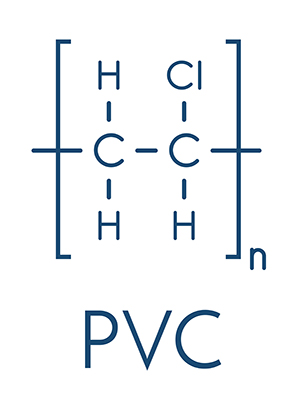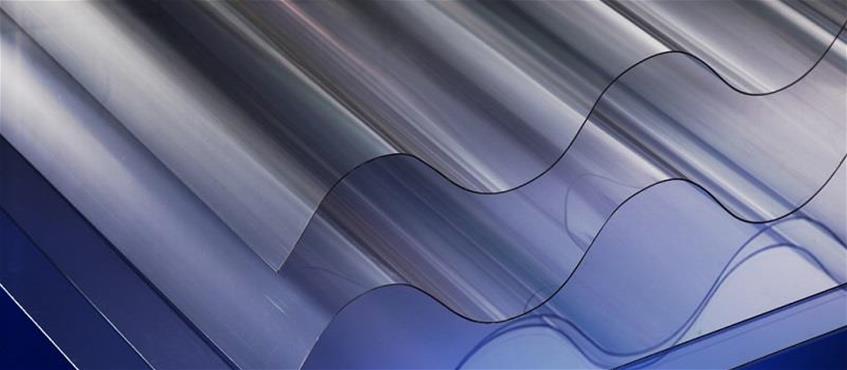PVC is a cost effective choice and very adaptable – different physical properties can be achieved depending on the blend of raw materials. It offers good chemical resistance which means it can be cleaned frequently, making it suitable for applications where cleanliness and hygiene are important.
Brett Martin’s Marvec range encompasses flat and corrugated PVC sheet for roofing, glazing and cladding.
 PVC is produced from the polymerisation of the vinyl chloride monomer, CH2=CHCl, which in itself is derived from salt (57%) and oil or gas (43%).
PVC is produced from the polymerisation of the vinyl chloride monomer, CH2=CHCl, which in itself is derived from salt (57%) and oil or gas (43%).
The PVC production process consists of many steps:
- Extraction of salt resource
- Extraction from the hydrocarbon resource
- The production of ethylene and chlorine from these resources
- The combination of chlorine and ethylene to make the vinyl chloride monomer (VCM)
- The polymerisation of VCM to make poly-vinyl-chloride (PVC)
- The blending of PVC polymer with other materials to produce different formulations providing a wide range of physical properties.
- Non toxic and biologically inert
- Chemically resistant
- Highly durable and flexible
- Capable of sterilisation
- Easily fabricated
- Low petrochemical content
- Low energy demand in production
- Highly cost effective material
- Long lifecycle
- Recyclable
PVC’s properties can be modified by changing the formulation. The properties which can be modified include:
- Light transmission: from clear to opaque
- Weatherability
- Flexibility: unplasticized and plasticized
- Density: see section on Foam PVC
PVC in all its formats can be used in numerous applications:
Construction
- Pipes, tanks and fittings
- Conduit – electrical and telecomms
- Doors and windows
- Fencing and decking
- Flooring and cladding
- Roofing membrane
Electronics
- Wire and cable insulation
Healthcare
- Artificial skin or blood vessels
- Sterile bags, catheters, cannulae, tubes and containers e.g. for blood, plasma, intravenous solutions or continence/ostomy products
- Surgical and examination gloves and overshoes
- Protective sheeting, mattress and bedding covers
- Pharmaceutical packaging
Automotive
- Instrument panels and associated mouldings
- Interior Door Panels and Pockets
- Sun Visors
- Seat Coverings
- Mud Flaps
- Underbody Coating
- Auto Harness Wiring
Fabrics
- Imitation leather
- Water-resistant fabrics
Other
- Vinyl records
- Bank and membership cards
Brett Martin’s rigid PVC is sold under the Marvec brand:
PVC requires less fossil fuel to make it than any other commodity plastic. Unlike other thermoplastics which are entirely derived from fossil fuels, PVC is manufactured from two starting materials:
- 57% common salt
- 43% fossil fuels
In recent years the European PVC industry has reduced the environmental impact of PVC firstly via the Vinyl 2010 scheme and then the Vinyl Plus scheme, setting challenging sustainability targets to minimise the environmental impact of PVC production, ensure responsible use of additives, and support collection and recycling schemes.
PVC is one of the most recyclable polymers but can be disposed of safely, if necessary.Plastics Industry
- British Plastics Federation www.bpf.co.uk
- The Plastics Portal www.plasticseurope.org
- European Council of Vinyl Manufacturers www.pvc.org
- PVC Design www.pvcdesign.org
- PVC Aware www.pvcaware.org
PVC Recycling
- Vinyl Foundation www.vinylfoundation.org
- Recovinyl www.recovinyl.com
- Vinyl 2010 www.vinyl2010.org
Associations
- European Plastic Distributors Association www.epda.com
- International Association of Plastics Distributors www.iapd.org

